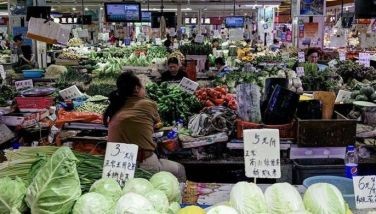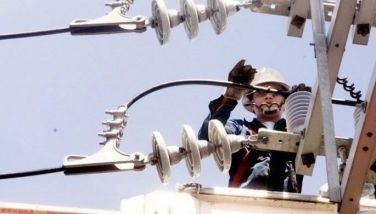Frenemies

Just recently, Foreign Affairs Secretary Alan Cayetano announced that leaders of the 10-member Association of Southeast Asian Nations (ASEAN) and China would begin negotiations in August for the crafting of a Code of Conduct (CoC) on the South China Sea.
While conceding that all parties are still facing challenges on the substance of the CoC, Cayetano said the Philippines was keen on pushing for a substantial document.
China’s claims in the South China sea are being contested by four ASEAN members, namely Brunei, Malaysia, Philippines, and Vietnam, as well as Taiwan.
The ASEAN foreign ministers and China, as early as 2002, have signed a declaration on the conduct by the parties in the South China Sea, while last year their foreign ministers adopted a framework of the CoC that will facilitate the work for the conclusion of an effective Code on a mutually agreed timeline.
China was ASEAN’s largest trading partner in 2016 and remained the region’s fourth largest external source of foreign direct investment. They aim to increase their two-way trade to $1 trillion by 2020.
But together with its economic importance, China, which claims almost the entire South China Sea, has reclaimed a number of disputed reefs and has put up military features over the past few years, thereby increasing tension in the region.
Given China’s military might (its defense budget for 2018 would reach over $170 billion) and its insistence that it owns these disputed areas by historic right, there is always that danger that any other claimant which will try to push its own claim will have to be ready to fight it out.
Whether one country has a better claim than the other is not something anybody would want fought out in the battlefields.
Vietnam tried to adopt a hardline approach in 1988 when it established its presence in areas surrounding Johnson South Reef (Mabini Reef), which is also being claimed by China, the Philippines, and Taiwan. The Chinese Navy sent military ships and ground forces to Johnson Reef. Both sides opened fire on each other, leading to the deaths of 64 Vietnamese soldiers and the wounding of countless others. China even took nine Vietnamese soldiers as prisoners. It took three years for relations to normalize between the two countries after that bloody encounter.
Vietnam has since resorted to diplomatic means and mass protests to assert its maritime claims against China. In 2014, tensions flared up anew between the two countries when China moved an oil rig into disputed waters in the South China Sea. Protests broke out across Vietnam.
Last June, there were mass protests at an industrial park in Vietnam’s Tien Giang that was being built supposedly for Chinese investors. The anti-China protests led to about 100 people arrested. The protests actually began in Ho Chi Minh City, where workers opposed government’s plan to set up three new special economic zones that would allow 99-year concessions, and thus practically hand over, Vietnamese land to what they suspected to be predominantly Chinese business interests.
One good lesson that we can learn from all these is that while the Vietnamese people continue to protest Chinese incursions into the disputed waters, the Vietnamese government has tried to maintain good relations with China.
As a result, bilateral trade between Vietnam and China is expected to reach a record of $100 billion this year. Vietnamese exports to China have also experienced a significant yearly increase of 61.5 percent to over $35.46 billion, helping to reduce Vietnam’s trade deficit with China to $22.76 billion last year from $28 billion in 2016.
News reports from Vietnam have also revealed that China is among Vietnam’s largest trade partners and also among its 10 biggest sources of foreign direct investments, with Chinese registered investment capital in Vietnam amounting to $12.1 billion US dollars last year.
Just like Vietnam, the Philippine government under President Duterte appears to be taking a more pragmatic approach to its maritime dispute with China.
Duterte and President Xi Jinping have committed during a bilateral meeting to ensure stability in the disputed territory and advance cooperation in offshore oil and gas exploration in that area.
Cayetano was then quoted by media as saying that the two sides are finding a common legal framework to conduct joint exploration and surveys in the contested waters, while Chinese Foreign Minister Wang Yi told reporters that the two countries would in a prudent and steady way, advance cooperation on offshore oil and gas exploration.
The Xinhua News Agency of China has also quoted President Xi as saying, after his meeting with President Duterte, that the disputed waters should be a sea of cooperation and friendship, and proposed a joint exploration between China and the Philippines at an appropriate time.”
Our government sees the need to conduct this joint exploration fast considering that Malampaya, our source of liquefied natural gas, will be running out by 2030 while our demand for power has been rising.
The sad reality is that while the West Philippine Sea has huge oil and gas deposits just waiting to be tapped and developed, we do not have the financial capability to shoulder the mammoth costs needed for its exploration and development.
Experts suggest that a joint exploration arrangement between the Philippines and China, so long as these are covered by commercial agreements, is legally acceptable. After all, our Constitution allows the government to jointly explore and develop the country’s natural wealth with foreign-owned corporations provided that the former retains full control and supervision of these resources.
Joint explorations are nothing new. If not for its partnership with Shell Philippines Exploration BV, our Department of Energy would not have been able to develop and operate the Malampaya natural gas facility. The Malampaya consortium for the 2002-2013 period alone has remitted a total of P173.28 billion to the government as its share from the net proceeds from petroleum operations.
According to studies, the resource potentials covered by the petroleum service contracts in the West Philippine Sea are much larger than the Malampaya gas field.
For comments, e-mail at [email protected]
- Latest
- Trending






























